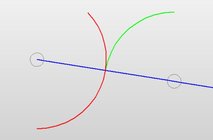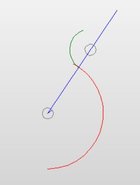Odie, it's interesting that you take issue with the "perfectness" of a turned object produced by a programmed machine when your work seems to depend on near absolute precision for its effect.
Kevin......You are confusing perfect geometry, as it relates to concentricity, with a profile view of the bowl. These are two entirely different things, and yes, I spend a lot of effort to maintain the perfect geometry as applied to concentricity. The current discussion is about the profile view of the turning.
I would say that the artistic value of a smoothly finished turned wooden object has to do with the choice of material, its orientation and clean execution, none of which are specifically dependent on the means of production.
In the past, I have discussed "spiritual turning", and how it is a method of producing the perfect cut. This is absolutely an element of
"the means of production", and is something that can only be done within the capabilities of a human participant. What makes it stand alone when comparing to a machine, is the machine has no ability to determine how well the cut is progressing, and make adjustments accordingly. Spiritual turning is only one component of the total equation, and there are other elements that need to take place before it stands out as something that is necessary for the whole equation to result in advanced performance.....and therefore, it's value within the equation to be fully understood.
A more perfect cut, necessarily means less sanding is required, and because of that one thing, a machine will never be able to do what a human being can do with his handheld tool making a bowl. (Spindle turning is applicable to a lesser extent.) When less sanding is required, The
concentricity of multiple circles is better maintained. When that happens, then multiple details, multiple intersecting corners, and many changing shapes is possible without them looking imperfect to the critically discerning observer, the connoisseur, as well as the psychological effect on the casual observer.
These things, I have stressed repeatedly in these forums.....but, it seems to me that not very many can comprehend their importance. I think for comprehension to take place, the act of experiencing spiritual turning is a prerequisite.
-----odie-----



